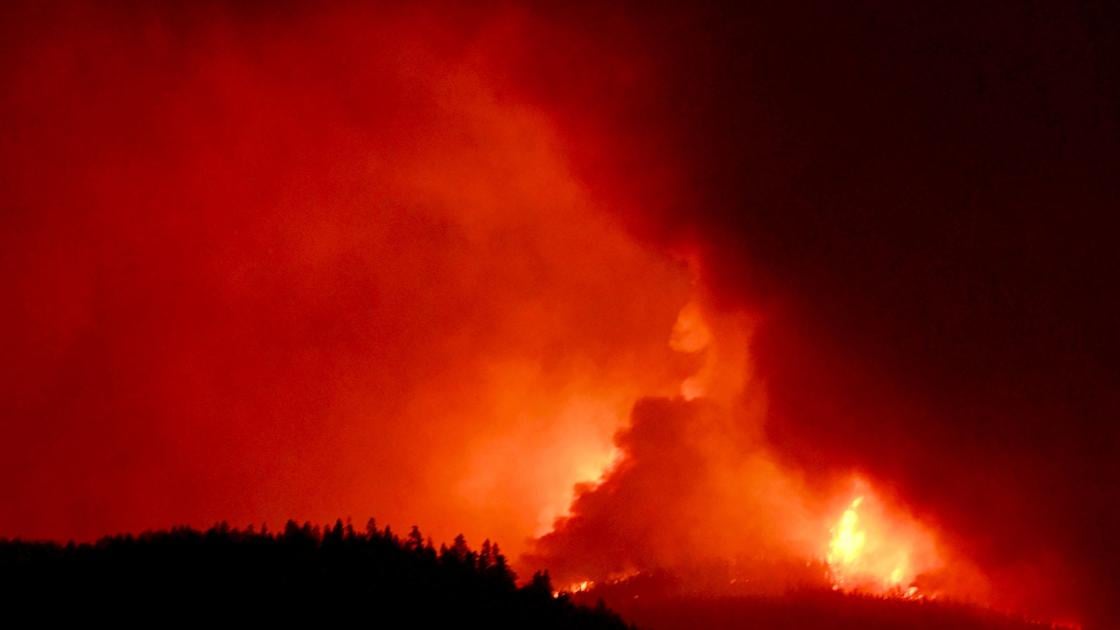
Who "owns" wildfire?
Montana saw 1.4 million acres burn in 2017. No year since 1910 left such a scar. And that’s likely to get worse until Americans take ownership of fire the same way they own responsibility for their personal health, according to research forester Mark Finney of the Rocky Mountain Research Station in Missoula.
“If you think of it like health care, it’s like we get rid of all the doctors’ and dentists' offices and only use emergency rooms and ambulances,” Finney told the Missoula County commissioners last week. “If we did that, the general state of our health would be terrible. Yet that’s what our fire management program essentially is.”
The United States spends about 88 percent of its wildfire dollars on firefighting preparedness and suppression, with the remaining fraction left for fuels treatment and other things that might keep fires from becoming catastrophic. The 3 percent to 5 percent of ignitions that get away from initial attack are responsible for 95 percent of the resulting damage. Last year, that tallied almost 10 million acres and $2.4 billion nationwide.
“We own the idea that health care is a necessity these days,” Finney said. “It’s not like medieval Europe where everyone was either young or dead. We need to move to something that involves less emergency treatment and more health maintenance. With fire, that’s something we’ve never had.”
Health care has an industry that understands it must deliver services for a cost its customers can afford, even if it hasn’t figured out how best to do that. Most individuals accept the responsibility to put aside money for medical care, and to seek out preventive care like teeth cleaning and mammograms.
Governments know they must tax citizens to pay for ambulance services and disaster response supplies. It’s all part of risk management that modern society “owns.”
“But nobody owns wildfire,” Finney said. “It’s a natural disaster — an act of God. Then everybody gets to claim to be a victim.”
But what would happen if someone did “own” wildfire? Missoula County has actually started answering that question, and Finney’s presentation to the commissioners was part of the effort.
A draft Community Wildfire Protection Plan should be ready for public review in March, according to Pat O’Herren of the county's Community and Planning Services Office. The plan draws from ideas shared among the commissioners, Fire Science Lab experts, members of the state Department of Natural Resources and Conservation, Forest Service ranger districts and others to change the way we deal with fire.
“As long as there’s been cured vegetation and lightning on the landscape, there’s been fire,” Commissioner Dave Strohmaier said. “We saw that with an exclamation point last summer when the smoke columns ringed Missoula Valley and every one of our homes was choked with smoke. That’s why we’re updating the fire protection plan.”
A big part of that involves prescribed fire. That’s where ownership comes in. Who will be responsible for planning the burn, and who will cover the risk if something goes wrong?
A prescribed burn releases 17 times less toxic pollution than an uncontrolled wildfire. But it still puts up smoke. Who should work out the details of contributing smoke in the Missoula Valley without damaging the area’s federal air pollution rating?
Finney’s historical fire research reveals some discomforting facts. The number of wildfires and acreage burned in the continental United States at the start of the 20th century is almost identical to the start of the 21st. But the fires of the last century happened all through the season, small, medium and large.
Tree burn-scar data showed fire-adapted forests — those that regularly cleaned out the duff, underbrush and new growth from forest floors, resulting in less intense fire behavior — got hit every six years on average.
The national attitude toward fire changed in 1910 when the Great Burn blackened 3 million acres along the Montana-Idaho border. Finney pointed out that of the dozens of individual fires that year, 59 percent of them got started from railroad embers, compared to just 5 percent attributed to lightning.
The U.S. Forest Service mobilized to prevent wildfires after the Great Burn. And from 1911 to 1920, firefighters with shovels and horses could contain 96 percent of the blazes to under 300 acres. But they were still fighting on those pre-cleared landscapes, where the conditions were stacked in their favor.
“It was natural to think we could put out any fire if we tried hard enough,” Finney said. “But now we’re not removing fire from the landscape. We’re just pushing it off to the most extreme conditions. And it costs hundreds of millions of dollars to exclude fire from California alone.”
Scores of studies have shown forests can reach a sustainable fire management condition. But it requires a step Americans have been unwilling to take.
“Logging alone won’t get us out of this problem,” Finney said. “If harvesting alone would have a significant effect, any place where you had 50 percent of your forest harvested should see that effect.”
But examinations of last summer’s Rice Ridge and Lolo Peak fires showed no change in fire progression when the flames hit checkerboard areas of past timber harvest. On the other hand, wildfires that encountered past burn scars or prescribed burns dropped in intensity and preserved remaining trees. Logged areas that also get a prescribed burn worked well too.
Fire Lab Program Manager Colin Hardy said Missoula’s attempt to get a better handle on fire management would pay dividends.
“I can’t imagine a better time and place than Missoula to have these kinds of discussions,” Hardy told the commissioners. “The rest of the country is looking at us as the poster child for how to manage this effort.”
Bagikan Berita Ini














0 Response to "Research forester: Americans must take ownership of wildfires"
Post a Comment